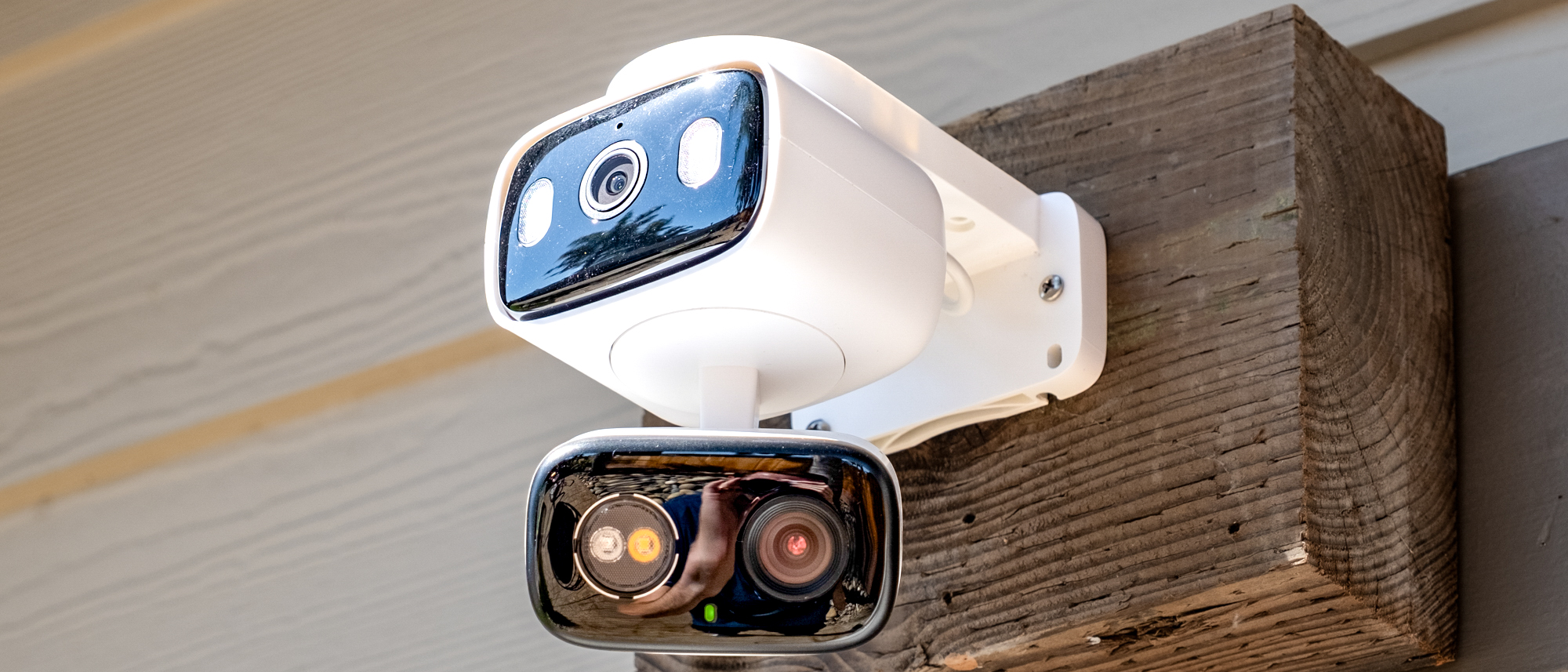Everything we know about the Fisker Pear
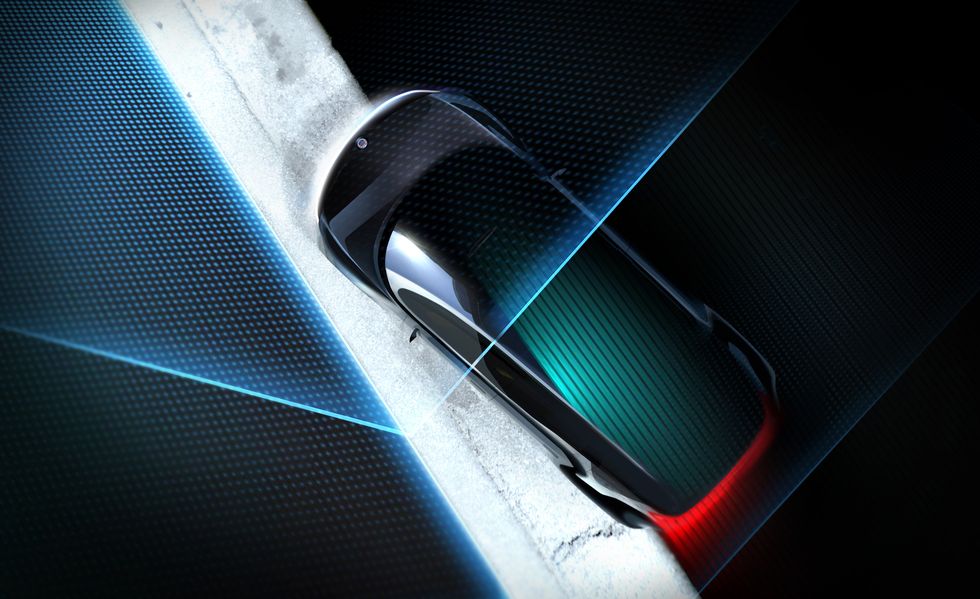
Release date: Late 2024
Price: $29,000
Power: TBA
Battery range: 310 (targeted)
0 to 60 mph: TBA
Smarts: TBA
Fisker took a little bit of time to get off the ground, but with Fisker Ocean deliveries set to begin before the end of the year, it’s time to look at the next car on the release schedule. That car is the Fisker Pear, and it’s Fisker's attempt at making EV prices more affordable.
There’s still a lot we don’t know about the car yet, but we do know that Fisker is aiming for a starting price of just $29,900. While still pretty expensive compared to combustion engine cars, this would make the Fisker Pear one of the cheapest electric cars on the market — a very short list that is in dire need of expansion.
Can the Fisker Pear usher in a new era of cheaper EVs? Here's what we know about the upcoming car at this point.
Fisker Pear: Pricing and availability
Fisker has already announced that the Pear EV will start at $29,900. That’s before any possible tax incentives, assuming the Pear qualifies for them. Not many cars do, since the federal EV tax credit introduced a bunch of new rules about which cars qualify.
That price tag puts the Pear around the same price as the electric Mini SE and Chevy Bolt EUV; it would be slightly more expensive than the Nissan Leaf and Chevy Bolt. It’s also likely that, as with the Ocean, the Fisker Pear will be available in multiple trim levels and with additional features. Those will all no doubt work to increase the price.
Deliveries are currently scheduled to begin sometime in 2024. However, it’s not clear when, or whether the Pear will launch in the U.S. and Europe in quick succession.
Fisker Pear: Design and interior
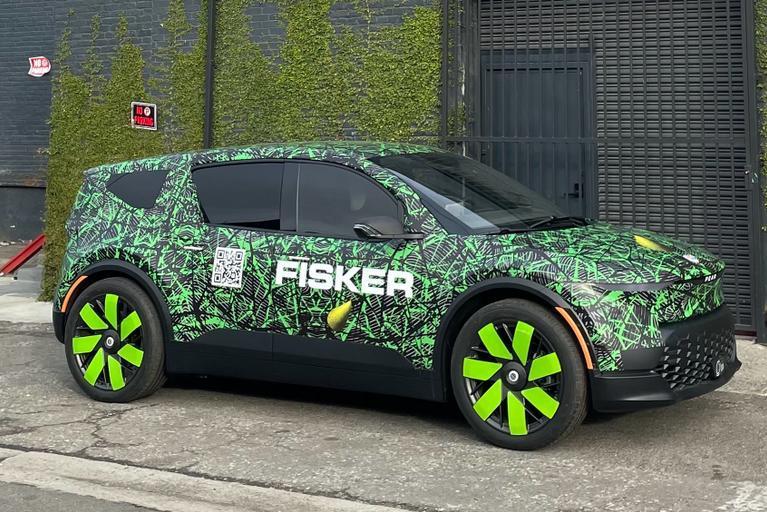
The Fisker Pear hasn't been fully-unveiled to the public, but we have now been able to get a look at the car's design. Our glimpses came from a testing video (via Fiskerati) filmed in Los Angeles and images posted on German site Auto Bild.
Get instant access to breaking news, the hottest reviews, great deals and helpful tips.
The Pear is camouflaged, but there's only so much that can be concealed that way. Especially when you get to take pictures of the stationary vehicle by the side of the road.
There had been some speculation that the Fisker Pear would be similar to Foxconn's Model C, a crossover SUV. Fisker has previously announced a partnership with the Tainwanese company, which is best known for building iPhones, and would likely utilize the company's new electric car platform.
Looking at the pictures of the Pear, it seems that this speculation was more or less right on the money. While modern electric SUVs tend to be rather similar-looking, no doubt thanks to aerodynamic styling, there are a lot of similarities between the Fisker Pear and the Foxconn Model C.
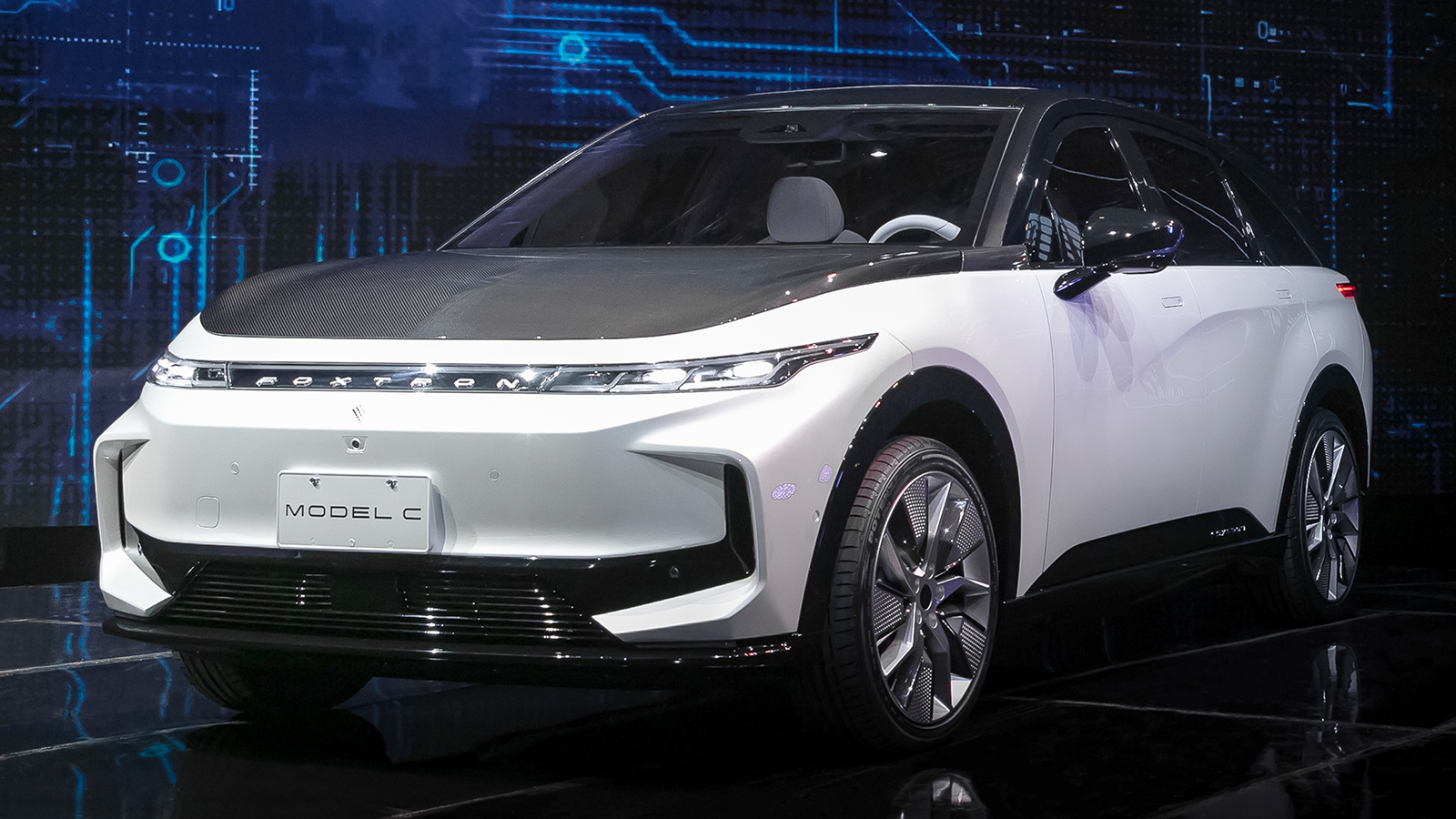
They're not identical granted, and the Pear seems to have a lower body and more prominent grill, but close enough to be recognisably related. Then again, it's unclear how many of those differences are down to Fisker's camouflaging. We're going to have to wait and see what Fisker has in store.
It's impossible to say how similar the Pear's interior might be to the Model C, ands Fisker's teasers haven't been hugely enlightening either.
The two teases we’ve seen that reveal any of the interior showcase a pretty typical electric car set-up, with some kind of central display and more open-plan feel thanks to the center console not being completely connected to the armrest.
That feature can make the car seem more open and roomy, and it is fairly novel — especially since the Ocean SUV lacks this particular style. However it’s not uncommon in modern electric cars, as automakers attempt to make the most of all the extra space afforded by the electric drivetrain.
Fisker Pear: Battery and range
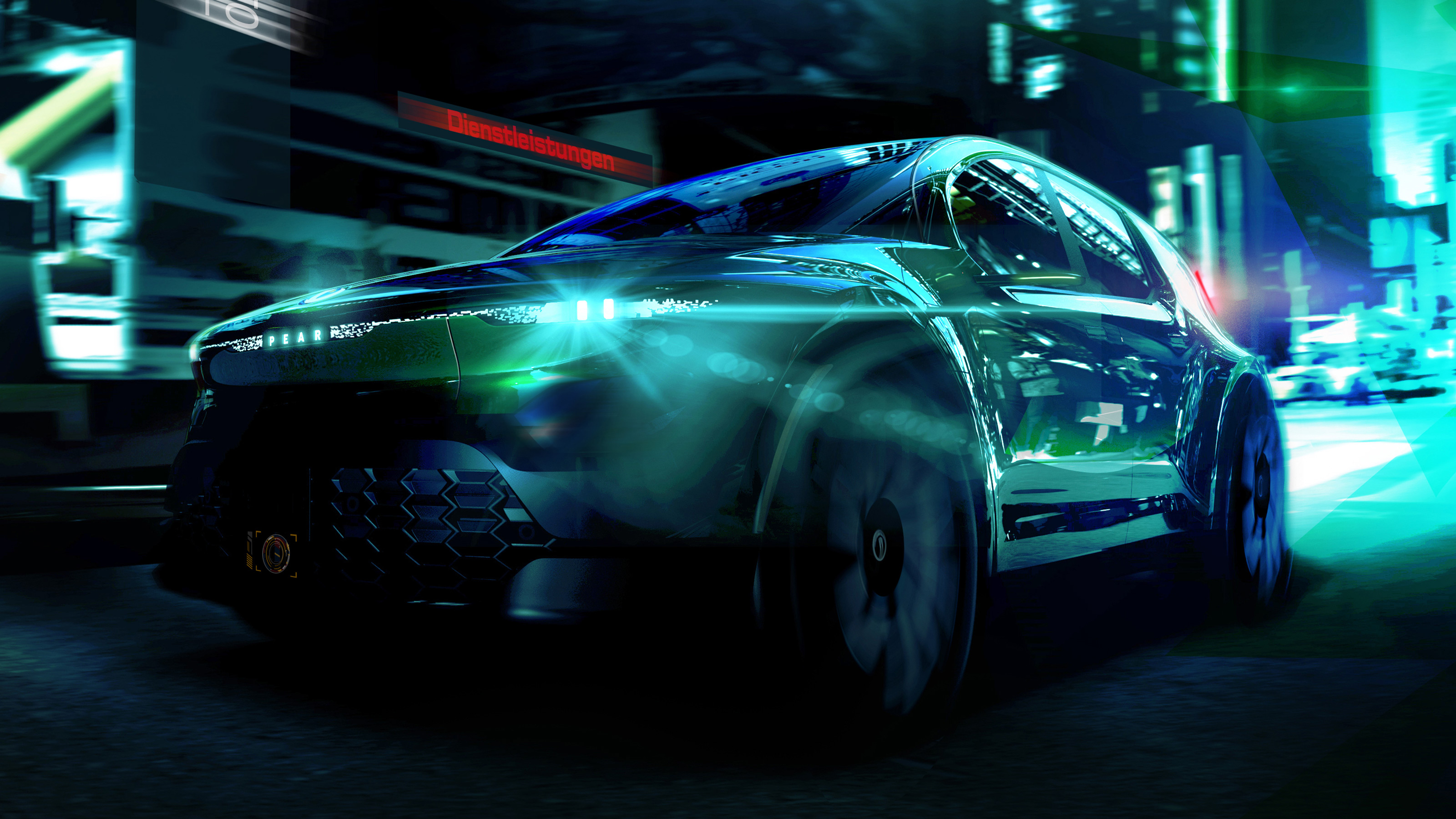
Fisker has announced that the Pear will have at least two battery options, and that the “Hyper Range pack” is aiming for a 310-mile range estimate. While that won't likely be available as part of the sub-$30k price tag, it is still an impressive top range.
The Fisker Ocean offers between 250 and 350 miles, depending on the trim. We hope that the entry level Pear offers somewhere around 250, especially since the Chevy Bolt offers 259 miles of range for about $4,000 less.
We don’t know how fast the Pear will be able to charge, given its low price tag. The Fisker Ocean is capable of handling up to 350 kW speeds, which adds 200 miles of range in around 30 minutes. We don’t expect the Pear to offer those high charging speeds, certainly not in the entry-level trim, but stranger things have happened. That said anything less than 150 kW is going to be a serious disappointment.
Fisker Pear: Performance
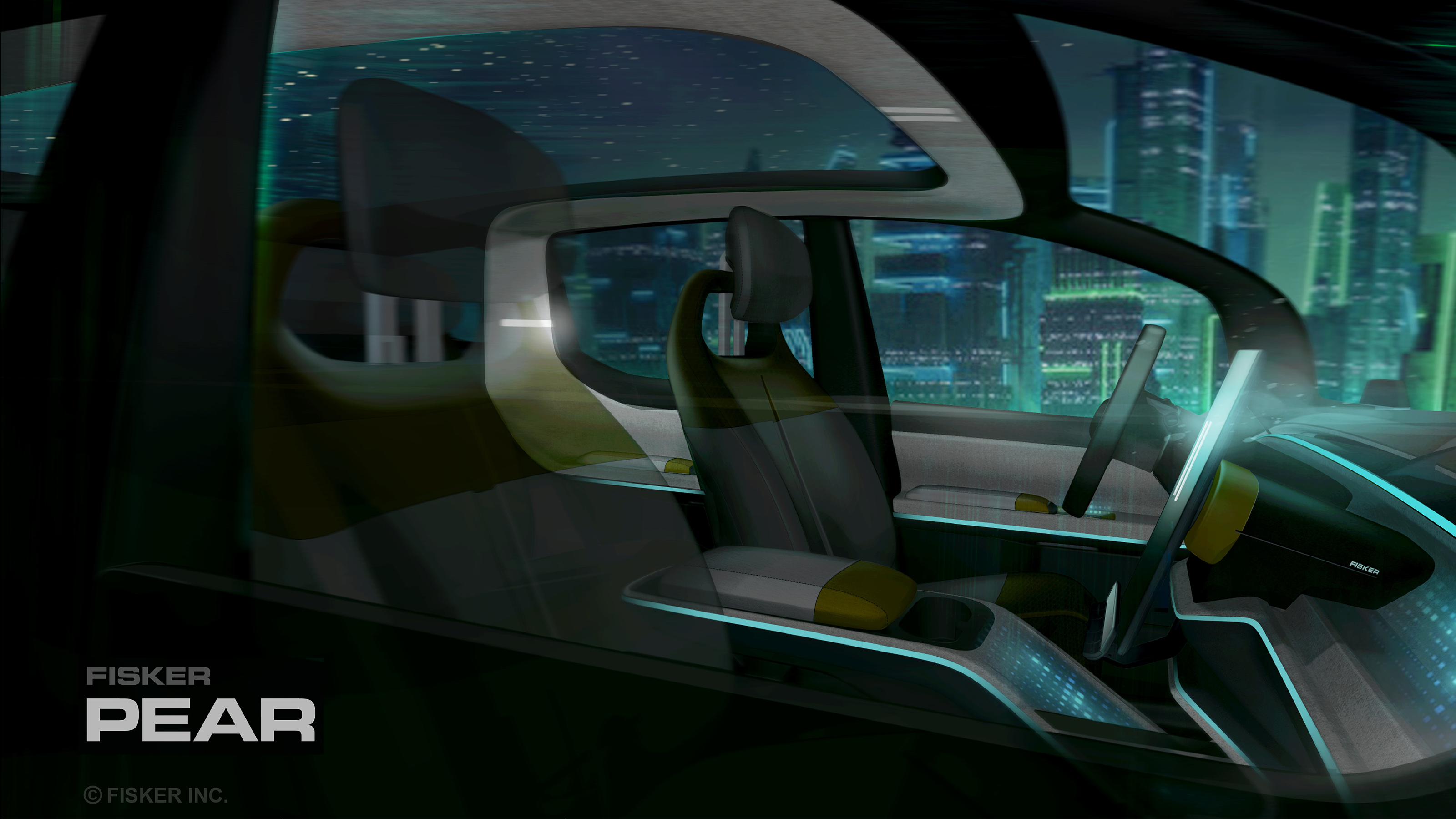
So far Fisker hasn’t revealed any details about the level of performance we can expect from the Pear EV. But, considering it’s designed to be cheap, there’s no way you’re getting supercar-level performance.
The Foxconn Model C has a 134 horsepower electric motor, which is pretty low. For reference the 2023 Nissan Leaf has 147 horsepower, the electric Mini SE has 184, and the Chevy Bolt offers 200. All three cars cost less than $30k — around the same price point Fisker is aiming for.
All three cars also employ a compact hatchback design, so they should theoretically be lighter than a compact SUV like the Pear. Unfortunately none of them are particularly fast, with 0-60 times in the 7.3-7.4 second range and top speeds that would make a Tesla blush. Only the Leaf can exceed 100 mph, and even it’s only by 6 mph.
So should the Pear come with the 134-horsepower engine, you should not be expecting the kind of performance you’d get in an electric car that costs $10-$20K more. But with nothing confirmed at this stage, all we can do is speculate.
Fisker Pear: Outlook
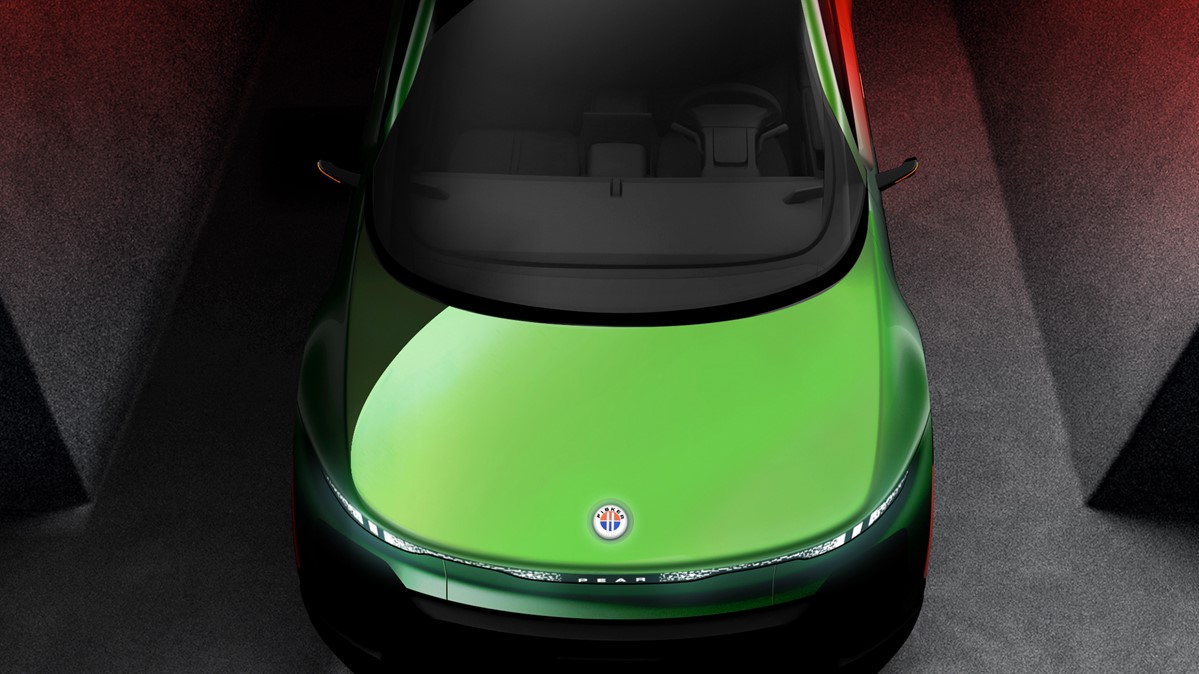
There are still plenty of unknowns where the Fisker Pear is concerned, and it may be some months before we start hearing more concrete figures about what this car will be able to handle. That said, when it comes down to it, so long as the range is good and the price is low, the Pear would already have the makings of a solid electric car. Perhaps even one of the best cheap electric cars.
While EV prices have been coming down (albeit slowly thanks to inflation and recent supply chain problems), there remains a dramatic shortage of low cost and affordable EVs. The Fisker Pear may not be due to arrive until 2024, but it can help populate that segment, so people aren’t forced to choose between a Bolt and a Leaf. And that's especially true if the Pear really turns out to be a compact SUV and can offer more cargo space than similarly-priced rivals.

Tom is the Tom's Guide's UK Phones Editor, tackling the latest smartphone news and vocally expressing his opinions about upcoming features or changes. It's long way from his days as editor of Gizmodo UK, when pretty much everything was on the table. He’s usually found trying to squeeze another giant Lego set onto the shelf, draining very large cups of coffee, or complaining about how terrible his Smart TV is.
